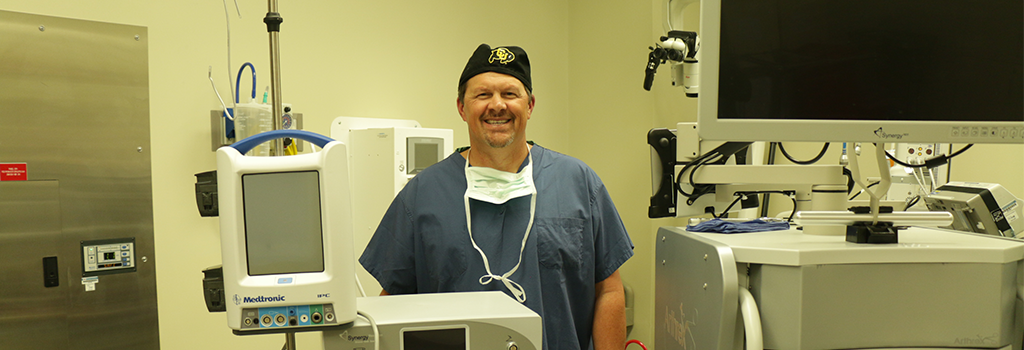What is Orthopedic Surgery?
Orthopedic surgery encompasses a specialized branch of medicine focused on diagnosing, treating, and rehabilitating conditions affecting the musculoskeletal system. It addresses a wide array of issues, from fractures and joint injuries to degenerative diseases like osteoarthritis. Orthopedic surgery plays a vital role in improving the quality of life for people of all ages. At Colorado Family Orthopaedics, we provide comprehensive surgical solutions based on your unique needs. From advanced joint replacement procedures to minimally invasive techniques, we offer a full spectrum of orthopedic surgical interventions aimed at helping you regain mobility and lead active, fulfilling lives.
Joint and Soft Tissue Surgeries
Knee Surgeries
- ACL Reconstruction, Meniscus Repair, and Ligament Repair: We specialize in repairing ligament injuries, meniscal tears, and anterior cruciate ligament (ACL) tears, restoring stability and function to the knee joint.
- Treatment for Osteoarthritis: For patients with osteoarthritis, we provide both partial and total knee replacement options, tailored to individual needs and lifestyle goals.
Shoulder Surgeries
- Rotator Cuff Repair: We offer state-of-the-art techniques for repairing rotator cuff tears, restoring strength and range of motion to the shoulder.
- Shoulder Stabilization for Dislocations: Patients with recurrent shoulder dislocations can benefit from surgical stabilization procedures to prevent future episodes.
- Total Shoulder Replacement: For severe shoulder arthritis or irreparable damage, total shoulder replacement surgery may be recommended to relieve pain and restore mobility.
Ankle Surgeries
- Treatment for Fractures, Sprains, and Achilles Tendon Injuries: Our team offers surgical intervention for fractures, ligament injuries, and Achilles tendon problems, helping patients regain stability and function.
- Ankle Arthroscopy: Utilizing minimally invasive techniques, we perform ankle arthroscopy for both diagnostic purposes and therapeutic interventions, such as removing loose bodies and repairing damaged tissues.
Elbow Surgeries
- Tennis Elbow and Golfer’s Elbow Treatments: We provide conservative and surgical options for managing tendinopathies and overuse injuries of the elbow, promoting healing and reducing pain.
- Elbow Arthroscopy: Using arthroscopic technology, we address conditions like osteoarthritis and loose bodies within the elbow joint, minimizing tissue damage and speeding up recovery.
Arthroscopic / Minimally Invasive Surgeries
Arthroscopy involves using a small camera and specialized instruments to visualize and treat joint problems through tiny incisions, resulting in less pain, faster recovery, and reduced scarring. Arthroscopic surgery represents a minimally invasive approach to treating joint conditions, offering several benefits:
- Minimally Invasive Techniques: We employ a variety of minimally invasive techniques for joint surgery, including arthroscopic procedures and robotic-assisted surgery, to achieve optimal outcomes with less trauma to surrounding tissues.
- Examples of Arthroscopic Procedures: Common arthroscopic procedures include meniscus repair, cartilage restoration, ligament reconstruction, and rotator cuff repair, allowing for precise diagnosis and targeted treatment of joint injuries and conditions.
Partial Knee Replacement
Partial knee replacement, also known as unicompartmental knee replacement, is a surgical procedure used to replace only the damaged portion of the knee joint while preserving healthy tissue.
When is a Partial Knee Replacement Recommended?
Candidates for partial knee replacement typically have arthritis affecting only one compartment of the knee, with intact ligaments and stable knee alignment. It may be recommended to relieve pain and improve function when conservative treatments have failed to provide adequate relief.
Benefits of Partial Knee Replacement
Compared to total knee replacement, partial knee replacement offers several advantages, including smaller incisions, less bone removal, faster recovery, and a more natural feeling knee. Additionally, partial knee replacement preserves more native knee anatomy, which may result in improved range of motion and better long-term outcomes for suitable candidates.
Rehabilitation Process and Expected Outcomes
Following partial knee replacement surgery, patients undergo a structured rehabilitation program tailored to their individual needs. Physical therapy plays a crucial role in restoring strength, flexibility, and function to the knee joint. Most patients experience significant pain relief and improved mobility within a few weeks, with continued improvements over the following months.
Total Knee and Shoulder Replacement
Total knee and shoulder replacement surgeries are effective treatments for severe arthritis and joint damage, offering lasting pain relief and improved function.
What to Expect From Total Knee and Shoulder Replacement Procedures
Total knee replacement involves removing damaged cartilage and bone from the knee joint and replacing it with artificial components made of metal and plastic. Similarly, total shoulder replacement entails replacing the damaged shoulder joint surfaces with prosthetic components. These procedures aim to restore smooth joint movement and alleviate pain caused by arthritis or injury.
- Preoperative Evaluation and Preparation: Prior to surgery, patients undergo a comprehensive evaluation to assess their overall health and readiness for joint replacement. This may include medical history review, physical examination, imaging studies, and laboratory tests.
- Postoperative Care and Rehabilitation Protocols: Following total joint replacement surgery, patients receive specialized care to manage pain, prevent complications, and facilitate recovery. Physical therapy is initiated soon after surgery to improve joint mobility, strength, and function. Patients are encouraged to adhere to prescribed rehabilitation program to achieve optimal outcomes and regain independence in daily activities.
- Success Rates and Long-term Outcomes: Total joint replacement surgeries are associated with high success rates and favorable long-term outcomes for the majority of patients. Improved pain relief, enhanced joint function, and increased quality of life are commonly reported benefits. Longevity of prosthetic implants varies depending on factors such as patient age, activity level, and implant type, with many patients enjoying durable results for 15 years or more.
Orthopedic Surgeon in Castle Rock, CO
Orthopaedic surgery can help relieve your pain and enable you to return to the activities you enjoy. If you and Dr. Garramone have determined that surgery is right for you, you will need to prepare physically and emotionally. We will guide you through what to expect from the surgery and create a treatment plan to help you recover as quickly as possible. Contact Colorado Family Orthopaedics in Castle Rock, CO, today to schedule an initial consultation.

